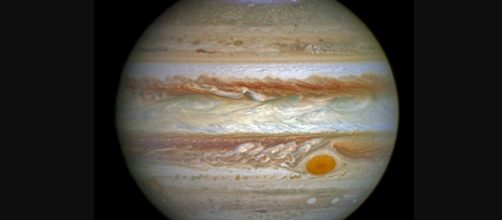Aside from its heavy storms, Jupiter also has Auroras in its North Pole. These mysterious lights have fascinated and intrigued scientists all over the world. Today, with the help of NASA’s Juno space probe, scientists were able to study and observe the phenomenon.
Auroras in Jupiter
Unlike the northern lights here on Earth, the auroras of Jupiter are made up of charged swirling energy. NASA researchers analyzed the data transmitted by the Juno spacecraft currently in the planet's orbit. Juno is equipped with an ultraviolet spectrograph and an energetic-particle detector that enables it to capture the planet's auroras.
Researchers from John Hopkins University Applied Physics Laboratory, led by Barry Mauk are studying the auroras of Jupiter. The auroras resulted from electronic potentials that interact with the planet’s magnetic field. The materials push electrons to the atmosphere creating energies up to 400,000 electron volts.
The volts are about 30 times higher compared to auroras on Earth. However, researchers were surprised to find out there's also a mysterious origin of auroras on the planet.
Mysterious auroras
Based on their research, the auroras in Jupiter could also be caused by some kind of an acceleration process that even experts know very little about. Scientists are so keen to find out more about it that an instrument called Jupiter Energetic Particle Detector Instrument (JEDI) was developed to investigate the phenomenon.
According to Juno's data, the mysterious origin is attributed to varied power density generation. It gets stronger and then turns unstable and turbulent before another process takes over. To fully comprehend it, they have to analyze Juno's data further.
Jupiter, as one of the oldest bodies in the Solar System, is considered an important learning tool for discovering the origin and evolution of the universe including planet Earth. In addition to the importance of the process to the evolution of Jupiter, what the researchers could learn from it will also help NASA to develop future space programs for the planet.
The planet’s radiation belt could have energy particles with strong electric charges.
Understanding the radiation belt will greatly help how future spacecraft is developed. Future Jupiter-bound spacecraft should be developed with the particles in mind. They needed to survive the planet’s radiation belts to perform observation and scientific experiments in the region.


